One of the most memorable places I explored during my visit to Jurong Lake was the Bonsai Garden.

Jurong Lake Park features four major gardens: the Lakeside Garden, Chinese Garden, Japanese Garden, and Garden Promenade. But where exactly is the Bonsai Garden among these four main areas?

The Bonsai Garden is part of the Chinese Garden, and this area alone is large enough to take about 2-3 hours to explore thoroughly. This means that covering all of Jurong Lake in a single day would be difficult by foot (at least for me).
Whenever I visit and explore a place, I usually take a lot of photos, searching for the best angles until I’m satisfied before moving on to another area.

I visited the Chinese Garden last Saturday, but I decided to go back on Sunday when I realized there were still many areas I hadn’t explored. When I returned, I was surprised to see so many visitors.



It had been almost empty on Saturday, but it was much more crowded on Sunday. I suppose this is a popular hangout spot because it’s less busy and noisy compared to parks in the city center.


Although it’s part of the larger garden complex, the Bonsai Garden feels like a place of its own. It’s enclosed by walls resembling those of a traditional Chinese house, creating a unique atmosphere. Rather than feeling confined by tall walls, I felt as though I was wandering through the elaborate rooms of a grand traditional Chinese home.


The pathways led me to the focal points of the garden, making it easier to navigate its labyrinth-like layout. It was very enjoyable to explore, as the design was both well-thought-out and inviting.



A circular archway? How cool!
This entrance has a charming, Hobbit-like feel that I really enjoy.

As I entered the archway, I was immersed in a wonderful display of potted bonsai trees, a central rock formation, and the beautifully designed roof of the theater room... and yes, there’s that too!


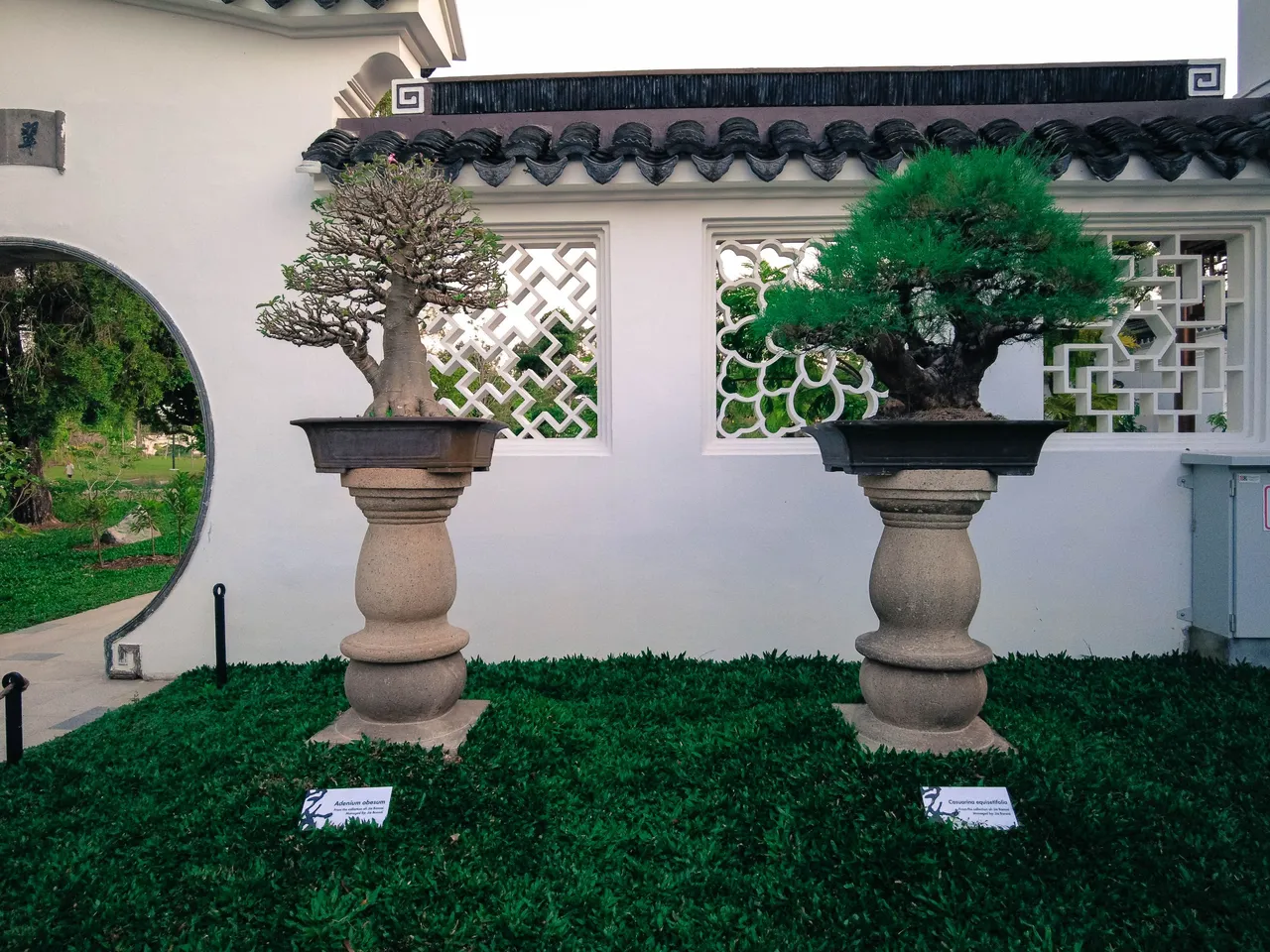

After admiring each bonsai tree on display, I went into the theater room to see what it had to offer.
Inside, a documentary about the practice and history of bonsai in Singapore was playing continuously. There were also informational boards placed around the room.




Inside the theater room is a diorama showcasing various aspects of the Chinese Garden. This was especially interesting because it gave first-time visitors like me a broader understanding of how the garden was developed.


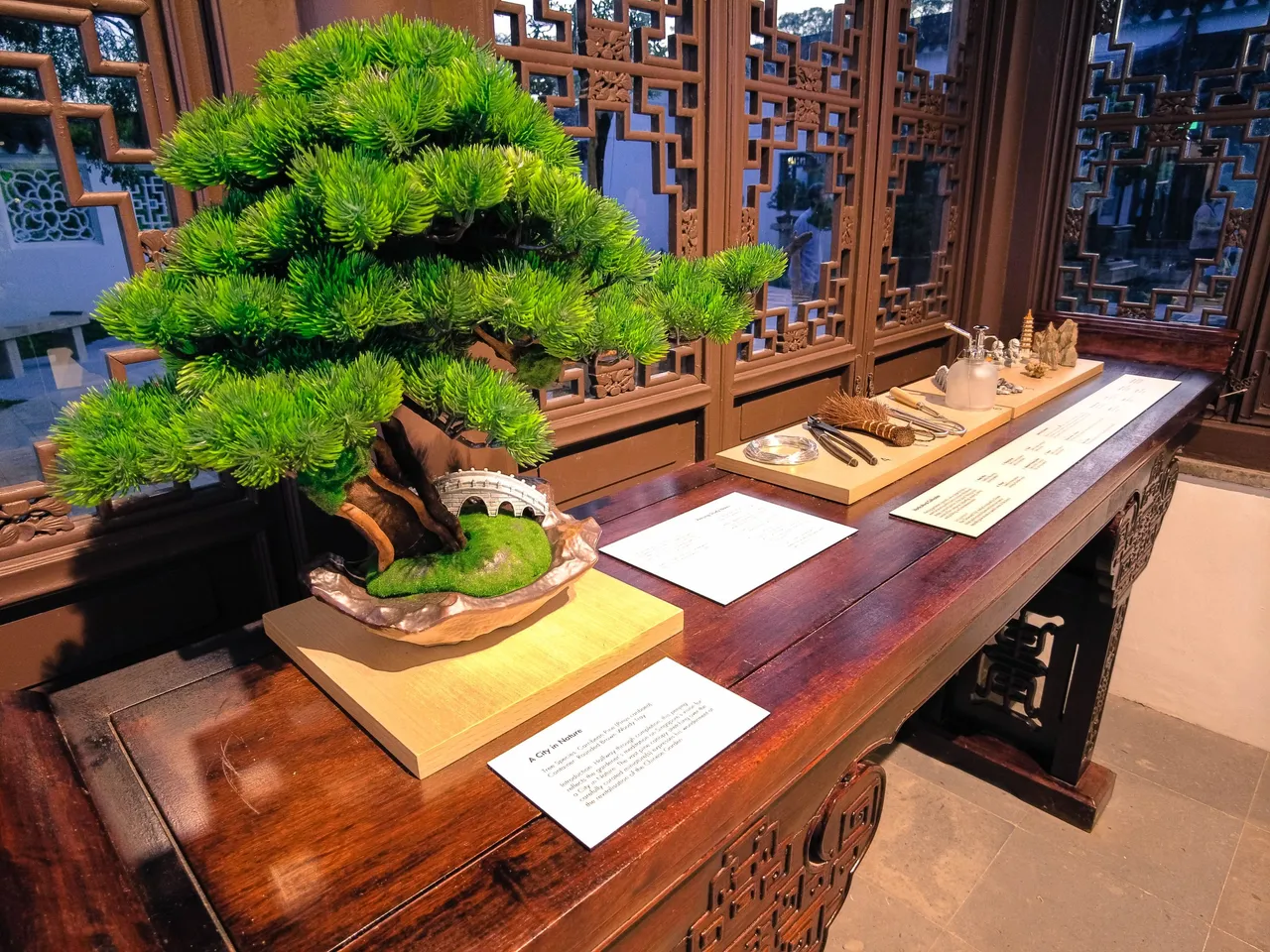
After my tour of the theater room, I decided to explore other parts of the Bonsai Garden. It was already around 7:00 PM, and the staff informed me that they would be closing the room, so I took that as a sign to check out the rest of the garden.


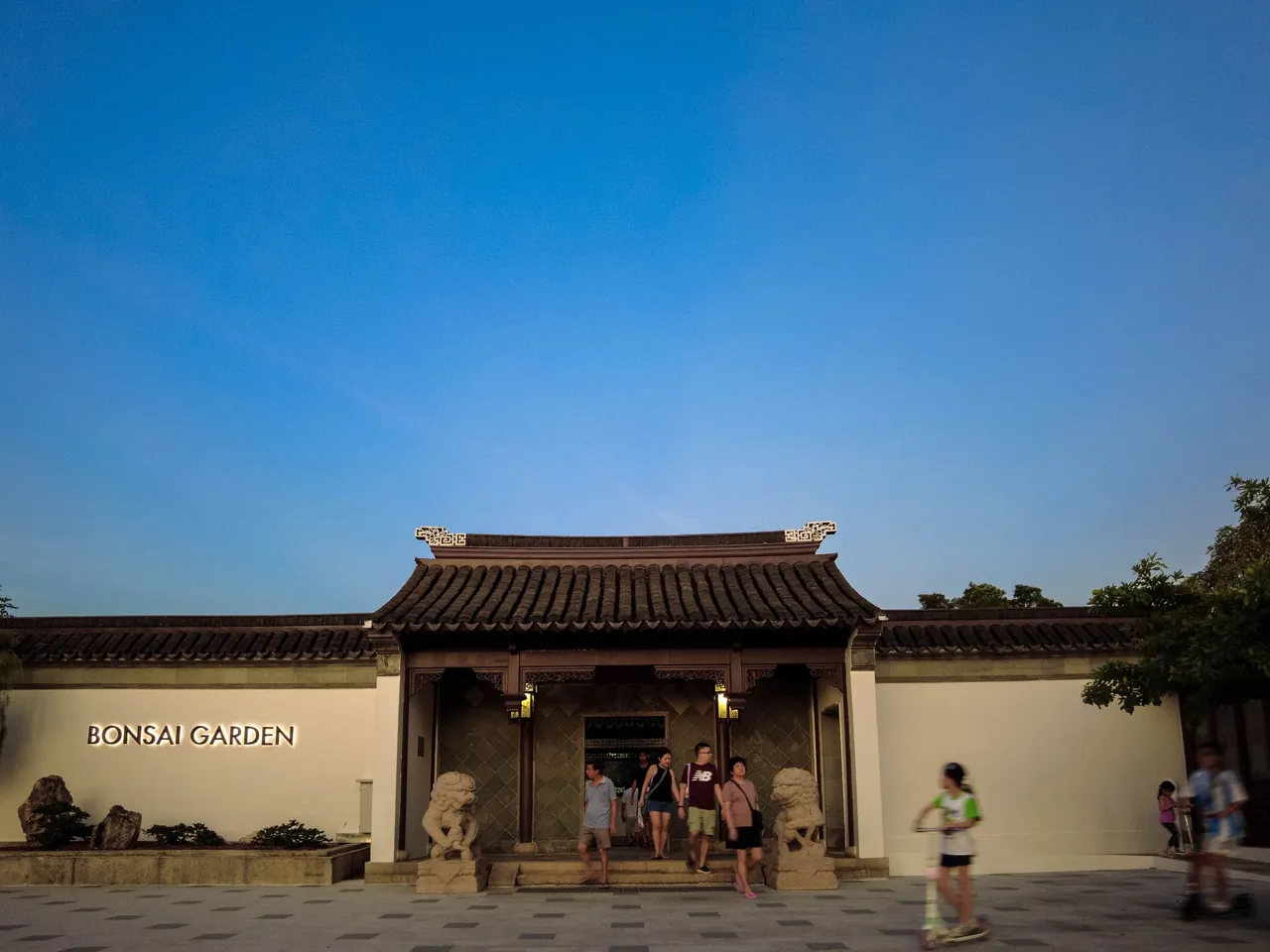
Since I wasn’t aware that the main entrance to the Bonsai Garden is from the Tea Pavilion, it was a bit late when I found out. However, I think the timing was perfect because the lighting in the sky at that moment made everything look truly wonderful.




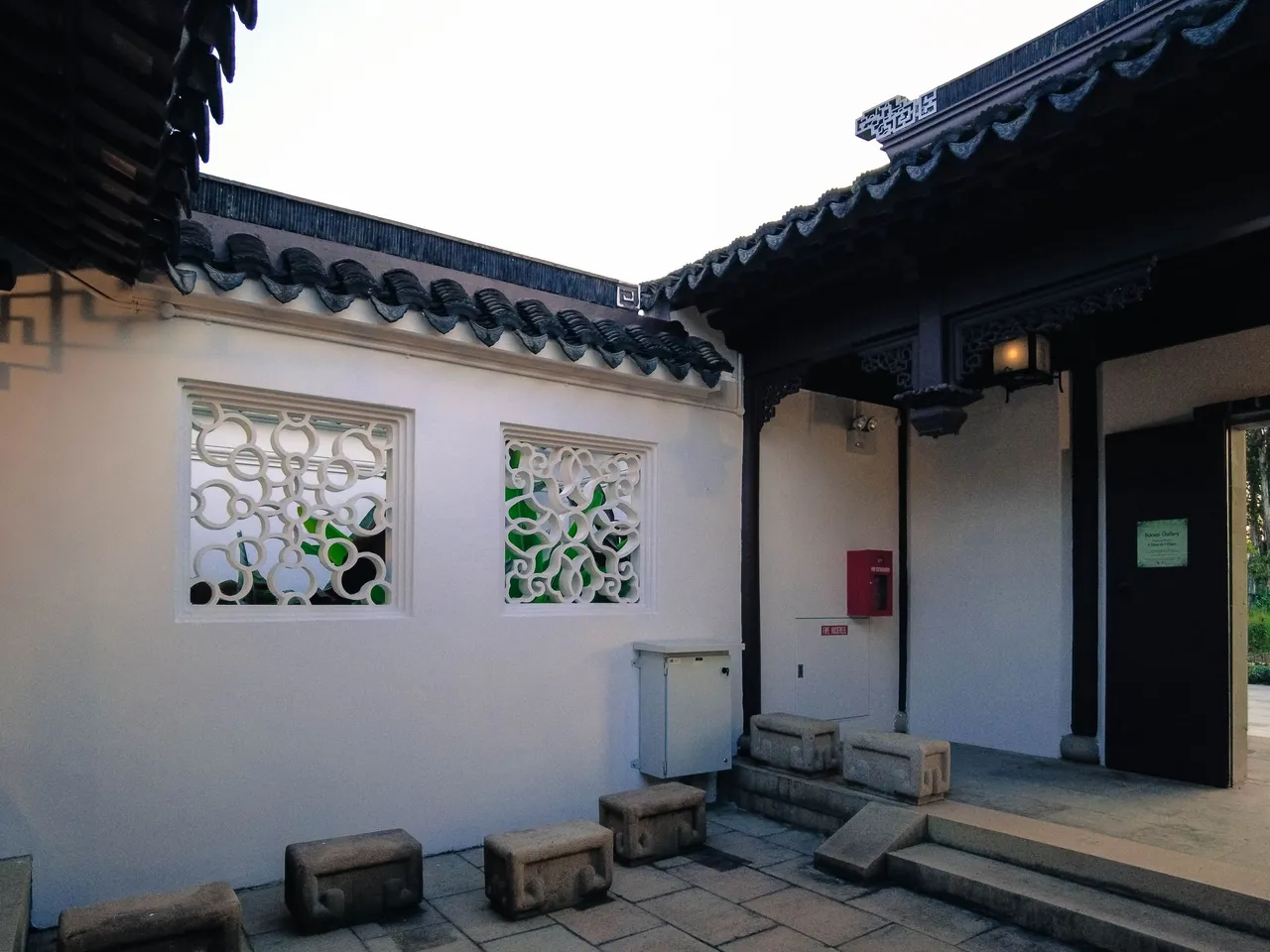

As I explored this part of the garden, I felt as though I was stepping into a beautiful piece of Chinese history that showcases the lifestyle of the wealthy during that era. It was very calming to walk through the stunning landscape and admire the architecture, which felt inviting due to the wooden materials used in constructing the houses.





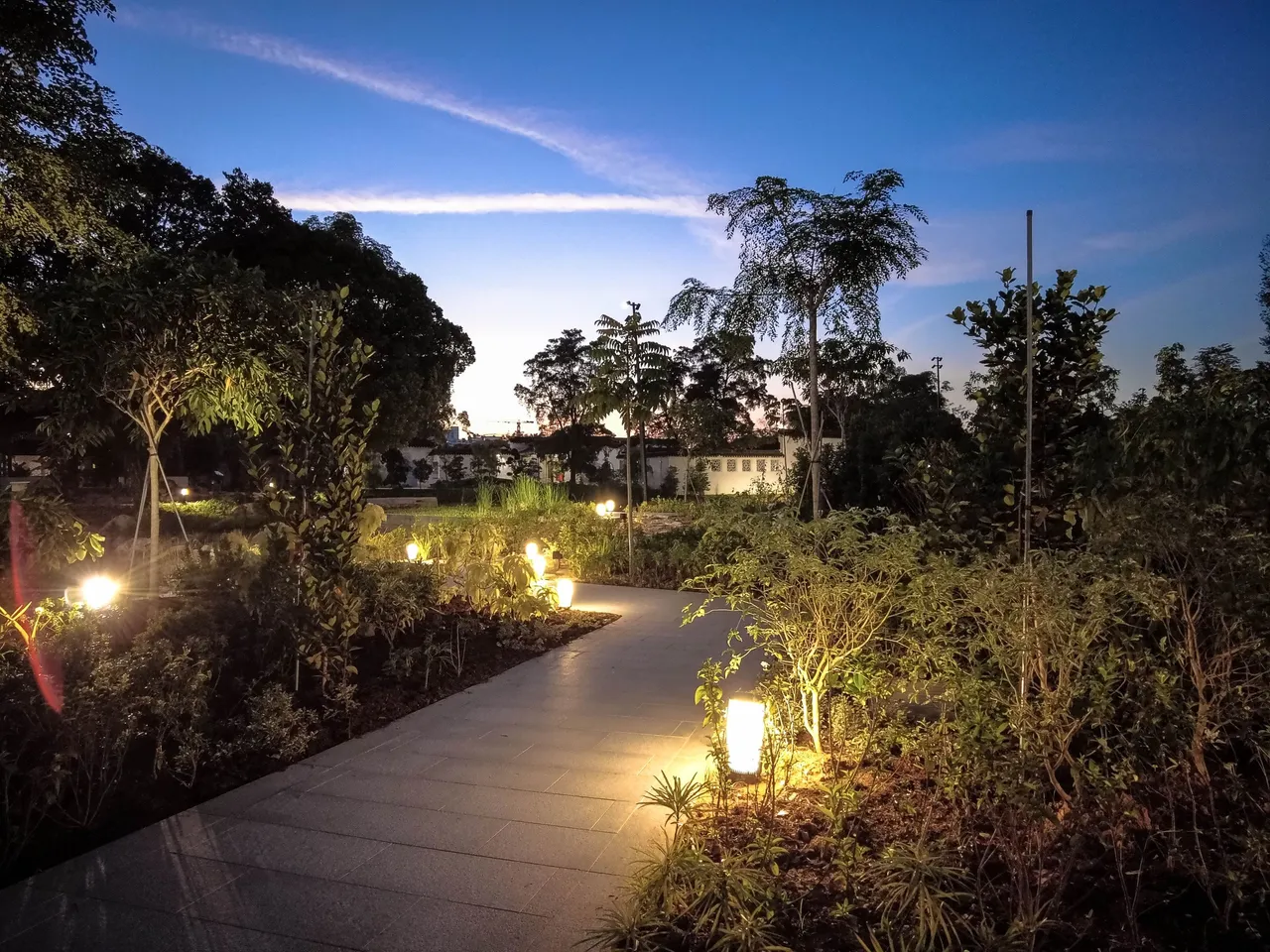
Visiting the Bonsai Garden was a truly enriching experience, allowing me to connect with the beauty of nature and the elegance of Chinese culture. The harmonious blend of stunning landscapes and intricate architecture made it a perfect retreat from the bustling city. I highly recommend this peaceful oasis to anyone looking to explore and appreciate the art of bonsai and the tranquility it offers.

